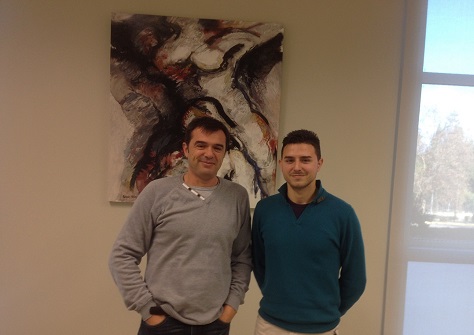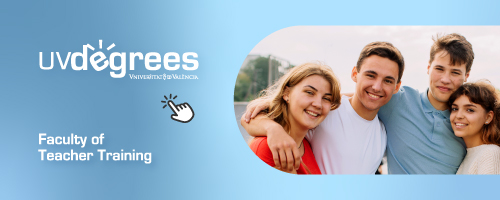
Two researchers of the Faculty of Teacher Training of the University, Manuel Monfort and Néstor Iglesias, studied how are implemented the body language contents in the subject of Physical Education and whether it encourages creativity, in the higher and secondary education studying years. The work, published in the scientific journal “Apunts. Educación Física y Deportes”, highlights that the studied teaching body tends to use directive methodologies and a technical orientation that do not promote the creativity in pupils, and also that there exists a lack of coherence between the programming and the actually developed activities in the classroom.
“The development of creativity is one of the body language (EC) objectives in the CV. Studying how this Physical Education content is treated requires analysing which is the role of the teaching body”, point out Manuel Monfort and Néstor Iglesias. Body language is a tool with a great creative force, “due to its potentiality in the usage of the body and movement as language and way of non conventional communication”, say the experts.
In order to evaluate whether the contents of the Body Language subject do meet the aim of developing the creativity of students, the researchers studied, with qualitative research techniques, the praxis of two male teachers and a female teacher with more than twenty years of teaching experience in different public schools of secondary and higher education.
The main conclusion is that the treatment of the contents encouraging creativity in compulsory education is “marginal, and the body language it is not taught under the same conditions as the others Physical Education contents”. “Many of the stablished contents by the programming regarding the body language are not taught, and those which are, the proportion of sessions compared to other subject areas such as the physical condition and health, or games and sports, is significantly lower, and therefore, the time spent will affect the comprehension and acquisition of the competences and experiences”, says the research. In reaching this conclusion, Monfort and Iglesias, of the Department of Corporal Expression Teaching of the University, during the academic year, had been following how classes were developed.
The work, “La creatividad en la expresión corporal. Un estudio de casos en education secundaria”, was published in the last three months of 2015. The research shows how the used methodologies by the studied teachers correspond to traditional uses or reproductive methods, and at the same time, that these appreciate training lacks due to more open and coherent methodologies with the objective of developing creativity.
The reasons by which this situation occurs are on one hand, the initial and permanent training of the teaching body, and on the other hand the lack of personal experiences with this content. However, the studied teachers are aware of the importance of body language. “Teachers are aware of their lack of training but the evolution of their practice is limited, given that their proposals and methodologies vary substantially and do not allow a development of creativity of the students”.
For this reason, “we have to consider the need of integrating, in the training programmes of future teachers and professors, contents explaining the current situation of body language in the reality of the educational system with the objective of making teachers and professors aware to become the protagonists of regeneration and evolution of this content”, points the research.
Manuel Montfort and Néstor Iglesias also indicate as a need that apart from a good initial and complementary training of the teaching body, it is important to transmit the conscience of the importance of the philosophy of retraining teachers through a permanent and continuous training”.
Importance of creativity
In contrast to the traditional behaviour of a teaching based on strengthening the competences in basic instrumental subjects such as mathematics, language and sciences, promoted by the current education law, there are international studies pointing to a more open education, where aspects such as creativity, imagination and affective and educational education have a key role. In this context we find the study carried out by the professors of the Universitat de València.
“Despite the absence of a more open orientation in the educational policies of our country, in our curriculum we find subjects with contents potentially related with creative competences”, say Monfort and Iglesias about the Physical Education.
Article:
Monfort Pañego, Manuel; Iglesias García, Néstor. La creatividad en la expresión corporal. Un estudio de casos en education secundaria.
Apunts. Educació Física i Esports 2015, num. 122, 4th trimester (October-December), p. 28-35 ISSN-1577-4015.
DOI: http://dx.doi.org/10.5672/apunts.2014-0983.es.(2015/4).122.03
Link to the article: http://www.revista-apunts.com/es/hemeroteca?article=1708














